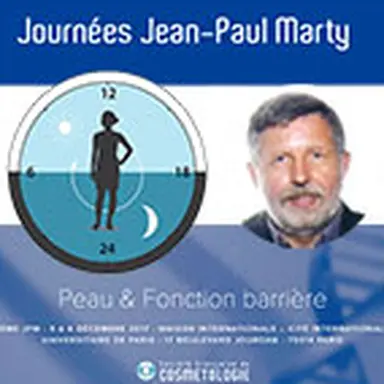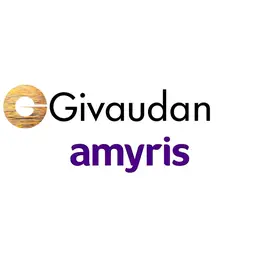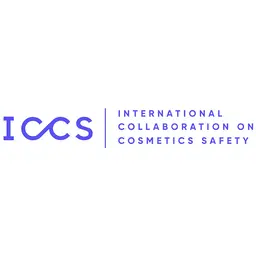
The principles of chronobiology were revealed more than two centuries ago. But the Nobel Prize in Medicine 2017 is the opportunity to rediscover this science and exploit its knowledge, including in cosmetics. At the 8th annual Jean-Paul Marty Days held in Paris in December, Dr Étienne Soudant, Honorary President of the SFC, who worked on this topic throughout his career, presented the circadian variations of the skin barrier function and their implications.
Anglo-Saxons consider the origins of chronobiology date back from the 18th century, when astronomer Jean-Jacques d’Ortous de Mairan observed that mimosa leaves opened out during the day and curled up at night, and that this cycle was maintained even if the plant was constantly kept in the dark. It was the first time someone had noticed a living being had an internal cycle that helped it anticipate the daily changes in its environment.
From observation to explanation
This biological clock is not specific to plants, since it was later shown that animals and men also have one, and that it helps them physiologically adapt to day and night fluctuations.
The term ‘circadian’ was formed with the Latin words circa, which means ‘roughly’, and dies, for ‘day’: circadian rhythms last about a whole day, i.e. the 24 hours from one day to another.
In chronobiological terminology, the term ‘circamensual’ refers to one-month rhythms, ‘circannual’ to one-year rhythms, and ‘ultradian’ to rhythms shorter than 24 hours.
It was a little later, in the early 19th century, that today’s chronobiology was born, when Julien-Joseph Virey, Chief Physician at the Val-de-Grâce military hospital, noticed drugs had different effects depending on the time they were administered. He also described a circannual cycle for mortality: ‘We are more likely to die of a heart attack in February or March than during the other months of the year’, Étienne Soudant gave as an example.
Since then, and until the 1980s-90s, chronobiology was demolished from a scientific standpoint, because if it described real and reproducible rhythms, it was absolutely not based on any physical or physiological elements…
It all changed when American researchers discovered the suprachiasmatic nuclei in the brain, along with the ‘clock genes’ and molecular mechanisms controlling circadian rhythms. That is what Jeffrey C. Hall, Michael Rosbach, and Michael W. Young received the Nobel Prize in Medicine 2017 for.
Useful circadian rhythms
‘We have rhythms because we cannot do everything at the same time,’ Étienne Soudant explained. ‘And our body had better know how to adapt to the different phases of the day, but also, and above all, anticipate them.’
An adaptive clock
Here is an example: our body temperature is lower at night, and it starts rising again two hours before the usual time we wake up.
Everyone has experienced, when they put their alarm clock on earlier than usual (for example, when they needed to catch a train or plane at dawn the next morning), the unpleasant impression of being cold or that their joints or muscles could not work properly: it is due to the fact that biological clocks could not adapt to this premature wakening.
Our biological clocks actually play an important role in regulating our sleep, appetite and food uptake, hormone release, or blood pressure.
Étienne Soudant provided a few examples of our organs activities and hormonal secretions depending on the time:
• 12am: end of the brain’s peak activity
• 1am: cell division peak in the epidermis
• 2am: minimum level of vigilance
• 3am: lowest blood pressure
• 4am: histamine secretion
• 5am: strong activity of the hypophysis
• 6am: joint stiffness
• 7am: beginning of cortisol secretion
• 8am: activation of the secretion of adrenalin and of lipolysis
• 9am: high blood clotting, glycogen synthesis
• 10am: catecholamine secretion, activation of lipolysis
• 11am: highest red blood cell count
• 12pm: secretion of insulin and corticotropic hormone
• 1pm: reduced vigilance again
• 2pm: lungs peak activity, insulin secretion
• 3pm: maximum muscular strength, high free fatty acid consumption
• 4pm: maximum blood pressure and heart rate
• 5pm: highest body temperature
• 6pm: increased sensitivity to pain
• 7pm: maximum brain capacity, increased ability for complex tasks
• 8pm: mental and physical abilities start decreasing
• 9pm: reduced blood pressure and body temperature
• 10pm: strong stomach and LPL enzyme (lipoprotein lipase) activity
• 11pm: highest white blood cell count, vigilance starts decreasing
Étienne Soudant commented upon this: ‘Once you know this, you can understand it is better not to go to the dentist’s around 6pm, when sensitivity to pain is the highest, especially since it is also at that time that anaesthesia are the least efficient!’
In addition, you had better not drive between 11pm and 2am or start any physical or intellectual work at 8pm…
Internal clock synchronization
Every species has their own specific, genetically controlled circadian rhythms.
But these internal clocks are regulated by external signals which play the role of synchronizers. When we travel abroad, they help us adapt to the jetlag within a few days.
The respective importance of internal clocks and synchronizers can be measured with free flow experiments: guinea-pigs are put in spaces cut from any external stimulation, like blockhouses or caves.
One of the best-known took place in 1988 with a volunteer, Véronique Le Guen, who spent 100 days completely alone in a cave. At the surface, three teams took turns to maintain a connection with her, but their mission consisted in never telling her what time it was or whether it was day or night. Her rhythm quickly got out of phase with that of the surface (she could nap for over 10 hours), so much that after the 100 days initially scheduled, she first refused to go up again, she thought it was only the 66th day of the experiment! Conclusion: apart from the influence of synchronizers, the day/night rhythms perceived are considerably longer.
‘In men, synchronizers are mainly the day/night alternation, the time we have our meals, and friendly meetings,’ Étienne Soudant mentioned.
It means the daylight plays an essential role. It is caught in the retina by a group of specific photo-receptor cells, the ganglion cells containing melanopsin connected to the suprachiasmatic nuclei in the brain through a nervous system different from that involved in visual perception.
That is how blind men perceive the day/night alternation without perceiving the light itself. On the contrary, sighted people might not see the day/night alternation if there is a dysfunction in their cells.
The signal transmitted to the internal clock puts the cycle back on time to synchronize it on 24 hours. This very signal is also transmitted to other ‘non-visual’ brain structures, which contribute, among others, to regulating our mood, memory, cognition, and sleep, as well as secreting melatonin, whose rate is higher in the absence of daylight.
‘It should be reminded that there are also cycles in our cells and that every one of our organs has their own circadian cycles: the brain plays the role of the master-clock that regulates all clocks in our body to make sure it works homogeneously and optimally,’ Étienne Soudant emphasized.
Chronobiology applications
Every discipline has their own vocabulary. That of chronobiology just shows the whole range of applications it offers:
• Chronesthesia: periodic variations of a biological target response to an active agent (drug, poison…) with periods of 24 hours, one year, etc.
• Chronokinetic: rhythmic variations of the availability of an agent after it was introduced in the body (for example, the change in the agent concentration in the blood plasma depends on the time it is administered)
• Chronoeffectiveness: variations in the desired effects of a therapeutic agent depending on what time it is applied
• Chronopathology: predictable periodic variations of a pathological process (brain haemorrhage accidents are twice more frequent in winter than in summer)
• Nychthemeron: refers to a biological rhythm whose average period lasts 24 hours (it is a special case of circadian rhythm in subjects synchronized under natural day/night alternation conditions)
• Chronotherapy: determines the optimum time of administration of a treatment to increase desired effects and reduce non-desired effects
• Chronotoxicity: periodic, i.e. predictable variations of the potential harmful effects of a chemical or physical agent (drug, pollutants, bacteria or plant poison…)
• Chronotolerance: antonym of chronotoxicity – refers to the time when a treatment or agent is best tolerated
• Chronopharmacology: predictable rhythmic variations of the effects of a chemical agent…
And it is actually for its concrete applications that chronobiology is particularly interesting:
• For example, chronopathology is used for treating depression (30% are due to a dephasing of the information of the hormones secreted by the brain, which can be resynchronized by being exposed to light during the day and complete darkness at night)
• Chronotoxicology and chronopharmacology can improve cancer treatments: many substances used in treatment protocols are most efficient and most toxic at different times, which helps increase treatment performance, while minimizing the adverse effects by adapting the treatment schedule…
• And these are only two examples of the multitude of benefits that can be gained from knowledge in chronobiology.
Barrier function rhythms
The skin also has its own chronobiological rhythms. It is even one of the first circadian rhythms to develop in children. ‘At birth, children do not know a day lasts 24 hours, which explains why they do not sleep through the night, but their skin acquires its circadian variations very early, in particular as regards hydration,’ Étienne Soudant explained.
There is also a mitosis peak in the epidermis – mitosis is the cell division process that helps the skin regenerate – around one in the morning, whereas it is very low during the day. ‘It is a natural way to prevent any mitosis in the sun, which may trigger too many mutations,’ he emphasized. ‘But beware: if you travel to Australia, for example, mitoses will occur during the day for about ten days.’ That is another reason why we should protect our skin from UV rays…
Variations were also observed in the skin microcirculation or transepidermal water loss, which is the lowest around noon and the highest around midnight. This last observation suggests the skin may be more permeable at night than during the day, and the penetration of certain substances, including cosmetics, may be more efficient at night than during the day.
Étienne Soudant was able to verify this data as soon as 1990, by taking part in a study on the more or less high efficacy of a cream, depending if it is applied during the day or at night. Other experiments measured the difference in the skin penetration of cosmetic actives. All results tally: the skin is most receptive at night, and that is also when the actives penetrate it best and are the most efficient.
That is a good answer to those that suspect the night cream concept of being only marketing-oriented!
There is still a lot to discover on the implications of circadian rhythms for the skin: Étienne Soudant announced the upcoming publication of other study results.
‘These data are still too little exploited in cosmetics,’ he commented. ‘If you want a substance to penetrate the skin, have it applied at night! Think about water-soluble ingredients, since it is at that time that transepidermal water loss is the most significant… And on the contrary, if you want a substance to remain on the skin surface without penetrating the body, only add it to products to be applied during the day!’
So, there is a whole different cosmetic approach that remains to be developed…













